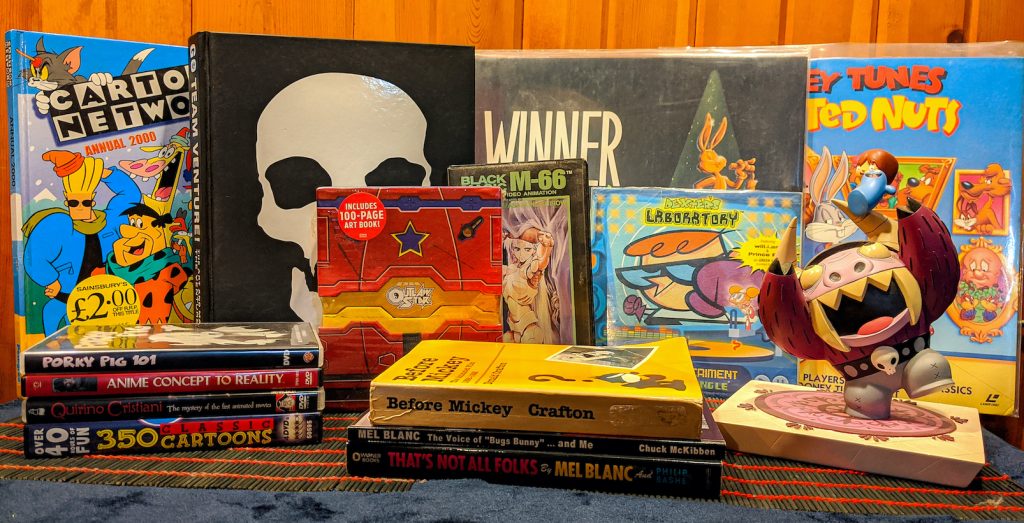Our society is either at the precipice of the most significant informational loss or the beginning of a new golden age of recorded information. The capabilities of the Internet, much like film and the printing press, has skewed our collective understanding of preserving information. Deterioration of past technology is quickly approaching for some physical forms of media, putting this global task on a finite timetable. Some art forms, like interactive animation, have built communities around preserving every aspect of game design. In animation, that process is a bit more skewed and less understood.

However, before jumping into the “how,” it is necessary to start with the “what.” Animation is distributed in many different physical forms: nitrate film, magnetic tape, optical media, and, in some cases, completely digital. The materials that develop out of the production process can reveal not only important details of the creative process but also the limitations of the respective business structures or current socioeconomic forecasts. The pre-production materials of an animated film outnumber the end product 100 to one. Indeed, storyboards, background paintings, maquettes, promotional art and advertisements, and physical objects for stop motion are some of the possible byproducts of the making of an animated film. And yet, in the corporate world, if these materials are even preserved in the first place and not destroyed and reused, they are usually kept within the confines of the organization. Moreover, if these materials reach the general public, it is only in the form of information presented in art books and behind-the-scenes materials. Most story production history is delivered orally through public events or tiny journalistic entities tracking this industry. To lock materials behind closed doors makes sense from a business’ point of view, but what is good for the business is not necessarily what is good for the public. After a hundred years of corporate buyouts and institutional piecemealing of Intellectual Property portfolios, it is difficult to track who owns what. Sometimes even the IP owners do not know what they effectively own.
Independent films face similar issues as corporation ones. However, independent animators can have the nimbleness to archive by the necessity of the process. The obvious double-edged sword is that they have no studio backing. The ability to achieve wide enough acclaim to warrant preservation can be a challenge not approached until meticulous cultural incubation over a long period of time. For every Bill Plympton filmography distribution deal, there is a Bruno Bozzetto waiting on the sidelines to be distributed for the first time. Even when rarities are published, modern consumers’ technical expectations can distract from an object’s cultural influence or historical significance.
Where there is money, there will be bureaucracy. The push and pull of American copyright law in the last fifty years has had a direct impact on the creative output of decades of artists and companies. The irony of the public domain means it should have products that are available for everyone. However, concretely, the public domain is an untidy amalgam of good faith attempts at demystifying complicated laws. With no overhead structural committee, though, it is a mess distributed over many websites and institutions across the world. The Internet itself has evolved quite a bit over the last thirty years. What was once looked at as a repository of all information, it is today a dynamic and ever-evolving communicative web that keeps expanding into new spaces on this planet.
At the end of the day, the collective public has more monetary capacity and a far-reaching ability to research than any institution could hope to materialize. However, it is also the least educated on the subject. Those within the organizations that develop animation normally do not have the extra resources to set aside time to preserve what is done, as opposed to focusing on what is coming next. In practical terms, a developed third-party association that works closely with all studios could solve some of these problems, and many institutions are doing what they can to aid in the preservation fight. Nevertheless, for now, it feels as though the rules are as follows: the market dictates availability. And what guides the market? You do.
Chris “Orrin Scott” DeWitt is a Project Manager at Vala Marketing in Elkhart (IN) where he aids in storyboard production. He is a lifelong animation fan.

3D, Vfx animation services